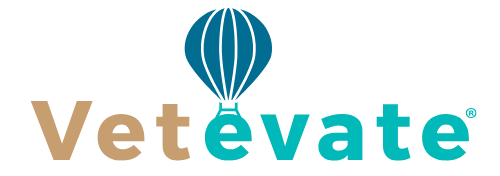Job descriptions are more than just a routine formality—they are the starting point of every successful veterinary hire. Whether a practice is looking for a credentialed veterinary technician, an associate DVM, or a front-desk client service representative, the job description sets the tone for the entire recruiting process. On a veterinary job board, this document is often the first impression a candidate will have of the practice. It’s their initial exposure to the clinic’s values, expectations, and work environment. In a field where competition for talent is high and candidate pools are limited, a vague or incomplete job description can result in lost opportunities or mismatches that create hiring friction.
A strong job description communicates more than the basic responsibilities of the role. It reflects the culture of the clinic, the level of professionalism expected, and the unique benefits of working with a specific team. In the veterinary space, where clinics vary greatly in size, specialization, and philosophy, candidates rely heavily on job descriptions to determine if a position aligns with their professional goals and personal values. A well-written job description can act as a filter that attracts the right applicants while gently deterring those who may not be a good fit. It saves time for both the employer and the job seeker and increases the likelihood of a quality hire.
The importance of job descriptions is amplified on digital platforms like veterinary job boards. Here, candidates may browse dozens of listings in a short amount of time. Listings that are clear, engaging, and informative naturally stand out. Those that are too brief, unclear, or overly generic often go unnoticed or get skipped entirely. In such a competitive environment, employers cannot afford to treat job descriptions as an afterthought. Instead, they should view them as strategic tools that help them tell their story, sell the opportunity, and connect with veterinary professionals who are actively looking—or passively considering—the next step in their careers.
Helping Candidates Make Informed Decisions
One of the core functions of a job description on a veterinary job board is to help candidates make informed decisions about whether or not to apply. Job seekers, particularly those with specialized skills or years of experience, are selective about where they invest their time and energy. They need to understand not only what a position entails, but also how it fits into their lifestyle, career trajectory, and personal mission. The more clarity an employer provides in a job description, the more confident a candidate can be in submitting their application.
Veterinary professionals often work in emotionally demanding and fast-paced environments. Many are dealing with issues of burnout, workplace stress, or lack of work-life balance. Because of this, they are looking for more than a paycheck—they are searching for positions that support their long-term wellbeing and growth. When a job description includes clear information about work hours, team structure, mentorship opportunities, and company culture, it gives candidates a fuller picture of what to expect. This transparency builds trust and reduces the risk of early turnover, which is a costly issue in any practice.
Beyond the standard responsibilities and qualifications, candidates want to know the “why” behind the role. Why does this position exist now? Is it a replacement or a newly created role? Is the clinic growing, or filling gaps left by attrition? Candidates also want to understand what success looks like in the position. Clear expectations around performance metrics, support systems, and career advancement paths can all be powerful motivators for qualified professionals. By addressing these elements in the job description, veterinary clinics show respect for the candidate’s decision-making process and demonstrate a level of professionalism that many job seekers find appealing.
Supporting the Employer Brand and Reputation
Job descriptions on veterinary job boards also play a key role in shaping an employer’s brand. In an industry as interconnected as veterinary medicine, word travels fast. A thoughtfully crafted job description signals that a practice is organized, communicative, and invested in its team. On the other hand, a vague or poorly written listing can raise red flags, causing high-quality candidates to question whether the clinic is worth their time. Even if a candidate doesn’t apply, their perception of the clinic is influenced by the tone, detail, and presentation of the job posting.
A job board functions as a public stage where clinics compete for attention and credibility. Inconsistent or sloppy listings stand out for the wrong reasons. Practices that take the time to articulate their mission, describe their team dynamics, and showcase what makes them unique can build a reputation that attracts candidates even before a position becomes available. Over time, this attention to detail and consistency contributes to a strong employer brand that extends beyond any single listing.
Job descriptions also give employers the opportunity to reflect on what they truly need. In preparing a thorough and honest listing, hiring managers are encouraged to think critically about the skills, attitudes, and experience that will best support their team. This reflection often leads to better interview questions, stronger screening processes, and clearer onboarding plans. All of these elements contribute to a more seamless and successful hire. It also reinforces a culture of intentional hiring, where every addition to the team is made with purpose and clarity.
Driving Better Matches and Faster Hiring
At the most practical level, high-quality job descriptions improve the mechanics of hiring. On a veterinary job board, where filtering algorithms and search criteria help match candidates to roles, the words and phrases used in a job description significantly impact visibility. Listings that clearly state credentials, required experience, specialties, and location specifics are more likely to surface in searches by qualified candidates. Ambiguous or overly general postings may fail to appear in relevant searches or get lumped in with unrelated listings, reducing their effectiveness and delaying time to hire.
Good job descriptions also reduce misunderstandings and minimize back-and-forth communication. When expectations are clear from the start, both candidates and employers spend less time clarifying basic details and more time focusing on compatibility and culture fit. This clarity speeds up the screening and interview process, which is critical in an industry where job openings often need to be filled quickly to avoid disruptions in patient care.
Moreover, detailed job descriptions improve retention by setting the right expectations early. When a new hire knows what they’re signing up for—both the challenges and the rewards—they’re more likely to stay committed and engaged. Misaligned expectations, often rooted in incomplete job descriptions, are a leading cause of early turnover. By investing the time upfront to write better postings, clinics can create more durable and successful employment relationships.
Ultimately, job descriptions are not just administrative necessities. They are strategic assets that influence every stage of the hiring journey. On a veterinary job board, where visibility, clarity, and reputation all intersect, a well-crafted job description can be the difference between a struggling search and a perfect match. Employers who recognize and act on this insight are better positioned to attract, engage, and retain top veterinary talent in a highly competitive field.




